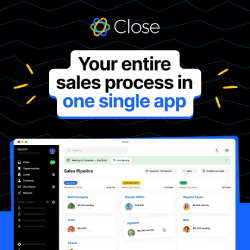
Voiceflow is a robust platform designed for building, launching, and managing conversational AI agents. Its intuitive interface and comprehensive feature set cater to both non-technical users and developers, making it an ideal choice for creating chatbots, voice assistants, and other AI-driven conversational interfaces.
Overview
Voiceflow empowers teams to create sophisticated AI agents without needing extensive coding knowledge. The platform supports a variety of applications, including customer support, in-app assistants, and voice interfaces. It combines a user-friendly, no-code environment with the flexibility of custom coding, allowing for seamless integration into existing tech stacks.
Main Features
-
Workflow Builder
- Visual Interface: The drag-and-drop workflow builder allows users to create complex conversational flows easily.
- Conditional Logic: Implement if-else conditions to handle different conversational paths based on user input.
- Multi-channel Support: Design workflows that can be deployed across various channels such as chat, voice, and web.
-
Knowledge Base
- Data Import: Import existing FAQs and documentation to train the AI agent, ensuring accurate and relevant responses.
- Real-time Updates: The knowledge base can be updated in real-time, allowing the AI to stay current with new information.
-
Data Management
- Centralized System: Manage all prompts, intents, and workflows from a single interface, providing a holistic view of the AI agent’s capabilities.
- Analytics and Reporting: Track the performance of AI interactions with detailed analytics, helping to optimize and improve responses over time.
-
Developer Tools
- Custom Integrations: Use APIs and SDKs to integrate Voiceflow with other systems and platforms, enabling bespoke solutions tailored to specific business needs.
- Code Flexibility: Developers can add custom code and functions, providing additional layers of customization and functionality.
-
Enterprise Cloud
- Scalability: The enterprise cloud infrastructure ensures that the platform can scale to meet the demands of large organizations.
- Security: Voiceflow offers enterprise-grade security features to protect data and ensure compliance with industry standards.
-
Collaboration Tools
- Team Collaboration: Multiple team members can work on the same project simultaneously, with real-time updates and version control.
- User Permissions: Assign roles and permissions to team members to manage access and control over different aspects of the project.
-
Prototyping and Testing
- Interactive Prototypes: Create and share interactive prototypes of conversational agents for testing and feedback.
- User Testing: Gather insights from user interactions to refine and improve the AI’s performance before full deployment.
Applications
Voiceflow is versatile and can be used across various industries and applications:
- Customer Support: Automate customer service interactions, reducing response times and increasing efficiency.
- E-commerce: Build shopping assistants that can help users find products, answer questions, and complete purchases.
- Healthcare: Develop health assistants to provide information, schedule appointments, and support patient engagement.
- Education: Create educational tools that offer personalized learning experiences through interactive conversations.
- Banking: Design financial assistants to help users manage accounts, perform transactions, and offer financial advice.
Case Studies and Success Stories
Voiceflow’s platform has been adopted by major brands like Amazon, Google, and Intuit, demonstrating its effectiveness and reliability in real-world applications. These companies leverage Voiceflow to create dynamic, scalable, and highly interactive AI agents that enhance user experiences and streamline operations.
Integration and Compatibility
Voiceflow supports seamless integration with numerous platforms and services, including:
- CRM Systems: Integrate with CRM tools to provide contextual responses based on customer data.
- Messaging Platforms: Deploy AI agents on popular messaging platforms such as Facebook Messenger, Slack, and WhatsApp.
- Voice Platforms: Create voice assistants for devices like Amazon Alexa and Google Home.
- Custom APIs: Use custom APIs to connect Voiceflow with proprietary systems and applications.




